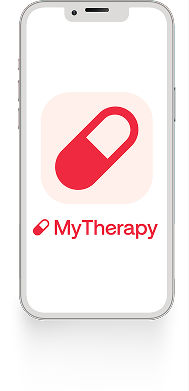

How to help manage some side effects together
Stay on course with help from your doctor and care team.
Keeping track of how you feel on treatment
Make sure to work with your doctor and care team to monitor side effects you notice and those you might not. Your healthcare provider may change your dose of TALZENNA or tell you to stop taking TALZENNA depending on how you respond to treatment.

What you can track
Tell your doctor about any side effects you’re experiencing such as tiredness/weakness, nausea, or decreased appetite.

What your doctor will track
Some side effects like low red/white blood cell counts, low sodium/calcium in the blood, and low platelet counts can only be seen through blood tests, which your doctor will do:
- about every month during treatment with TALZENNA
- every week if you have low blood cell counts that last a long time. Your doctor may stop treatment with TALZENNA until your blood cell counts improve.
Tips that may help with certain side effects
Below you'll find some lifestyle changes that may help manage certain side effects. These tips come from organizations that focus on supporting patients and have not been studied with TALZENNA. Check with your doctor to see which may be right for you.
Decreased red blood cell counts
Treatment may cause a decrease in the number of red blood cells, known as anemia. Anemia may make you feel very tired, short of breath, and/or lightheaded.

Decreased white blood cell counts
During treatment, you may experience a decrease in white blood cell numbers, which could put you at an increased risk of infection.

Tiredness or weakness
While on treatment, you may experience fatigue. Anemia could also contribute to the feeling of tiredness or weakness.

Decreased platelet counts
Platelets are cells that help your blood to clot and stop bleeding. Treatment may cause the number of blood-platelet cells to decrease, which could increase your risk of bruising and bleeding.

Decreased calcium in the blood
Treatment may cause decreased levels of calcium in the blood. This may lead to muscle cramps, especially in your back and legs.

Nausea
During treatment, you may experience nausea or an upset stomach.

Decreased appetite
Treatment may lower your appetite, which could lead to not eating enough nutrients. Nausea may also contribute to loss of appetite.

Decreased sodium in the blood
Treatment may cause sodium levels in the blood to be lower than normal. This may cause nausea and vomiting, low energy, and/or headaches.

These are not all of the possible side effects of TALZENNA. Call your doctor for medical advice about side effects.

MyTherapy® app
Check out this free app for customized TALZENNA content to support you along your treatment journey.
